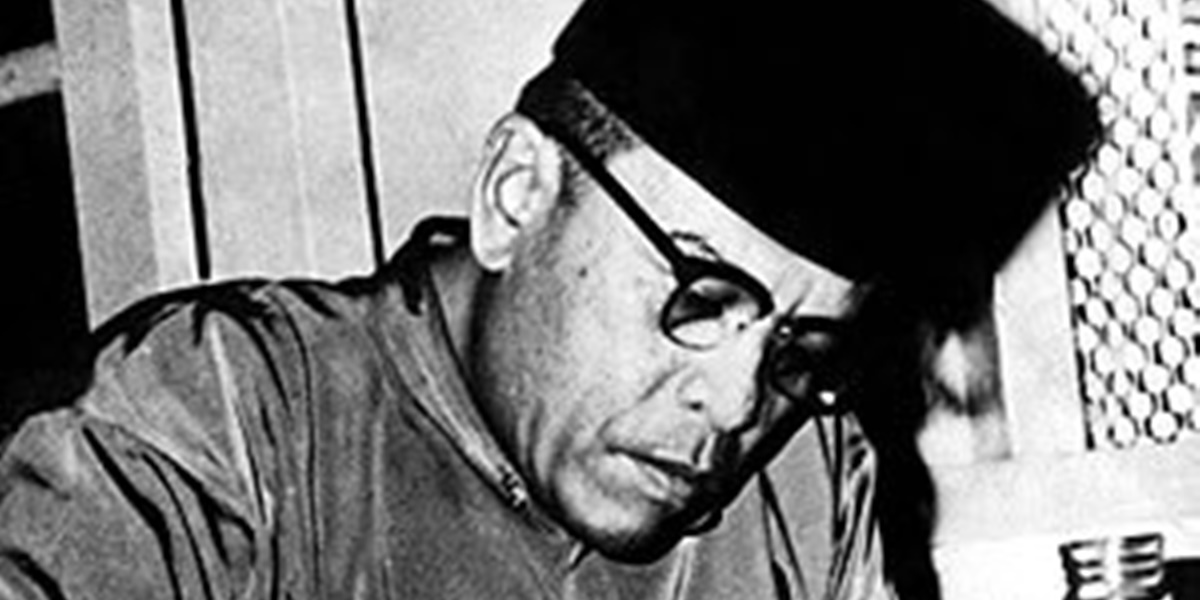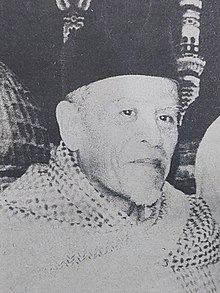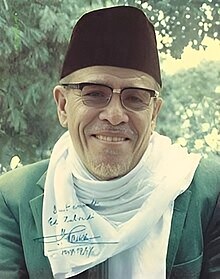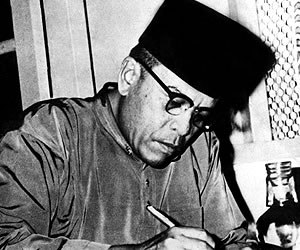8 Latest Romantic and Heartwarming Thai Dramas in 2023 You Can't Miss!
Thai dramas have become quite popular in Indonesia. With their well-known quality and compelling stories, the latest romantic Thai dramas in 2023 are highly anticipated.

Kapanlagi.com - Biography of Buya Hamka is one of the important historical stories to know. Buya Hamka or Haji Abdul Malik Kaltim Amarullah was born on February 17, 1908 and passed away on July 24, 1981. During his lifetime, Buya Hamka was known as an intellectual, scholar, and politician.
In addition, because of his contributions and services, Buya Hamka also received the title of national hero. Therefore, it is not surprising that, despite having passed away decades ago, the figure of Buya Hamka is still admired. Many people search for Buya Hamka's biography books to learn about his life story and to emulate his thoughts.
Interested in getting to know Buya Hamka more deeply? If so, just read the following short biography of Buya Hamka.

Buya Hamka (credit: wikipedia)
Buya Hamka is actually a pen name. His real name is Abdul Malik Karim Amrullah Datuk Indomo. Buya Hamka was born in Sungai Batang on February 17, 1908. Buya was born to a father who was a prominent religious figure at the time, namely Abdul Karim Amrullah. Besides being a religious figure, Buya Hamka's father was also known as an intellectual.
Buya Hamka is the eldest of four siblings. Hamka spent his childhood in the land of Minang. He spent his childhood studying the Quran and listening to poems. Young Hamka, who was often called Malik, often accompanied his father on preaching trips to various regions.
At the age of 4, Buya Hamka and his family moved to Padang Panjang. Then, at the age of 7, Buya Hamka began attending the Village School. Meanwhile, in the afternoon, Buya Hamka studied at the Diniyah School, where he learned Arabic.
However, Hamka's schooling at the Village School did not reach completion. In the third year, Hamka stopped attending school because his parents wanted him to focus more on religious studies. Hamka was then enrolled in Thawalib, a school similar to a pesantren that taught its students to study books.
At the age of 12, Hamka's parents divorced. During that time, Hamka was deeply affected. Hamka chose to skip school to relieve stress by wandering around the village. However, after being advised by his father, Hamka finally returned to school and resumed his usual learning routine.
Hamka began to be interested in the world of literature and books as he grew older. At that time, his teacher, Zainuddin Labay, established a library. In that library, Hamka read books published by Balai Pustaka, Arabic translations, and even Chinese books.
Buya Hamka was also said to have studied under the scholar Syekh Ibrahim Musa in Parabek, about five kilometers from Bukittinggi. Not only did he learn about religion and general knowledge, but also learned to live independently while staying in the dormitory.
Wandering has become a part of Minangkabau culture. Buya Hamka started to wander at a very young age, which was 15 years old. Buya Hamka wandered to Java, but before reaching Java, he first stopped in Bengkulu.
In Java, Yogyakarta became Buya Hamka's destination. In that city, Buya Hamka met his uncle or his father's younger brother. Buya was then taken to Ki Bagus Hadikusumo's place to learn the interpretation of the Quran. From there, Buya Hamka's religious knowledge developed rapidly.
Not only learning religion, Ki Bagus also introduced Buya Hamka to Sarekat Islam. Seeing a shared vision, Buya Hamka joined. After joining Sarekat Islam, Buya Hamka met HOS Tjokroaminoto, who later became his teacher.
After six months in Yogyakarta, Buya Hamka went to Pekalongan. There, he met and learned from his brother-in-law, Ahmad Rasyid Sutan Mansur. The meeting with Sutan Mansur strengthened his determination to engage in the struggle of preaching.

Biography of Buya Hamka (credit: wikipedia)
In 1933, Hamka went to Mecca to perform the Hajj worship. However, not only for worship, Hamka also intended to deepen his knowledge of Islam while in Mecca. Therefore, there, Hamka studied at the Dar al-Hadith al-Khairiyyah Madrasah.
To support his life in Mecca, Hamka worked at a printing press. Hamka worked while studying classical books and Arabic-language Islamic books. Living and settling in Arabia also improved Buya Hamka's Arabic language skills.
While there, Buya Hamka also proposed to organize Hajj rituals for Indonesian pilgrims. Therefore, Buya Hamka met with delegates, including Amir Faishal, the son of Ibn Saud and the Grand Imam of Masjidil Haram, Abu Samah. The plan was to hold the rituals in the Masjidil Haram complex. Unfortunately, Buya Hamka's plan was opposed by his Hajj guide.
In Mecca, Buya Hamka also met Agus Salim. The meeting with Agus Salim further opened Buya Hamka's mind to the activities of the Islamic movement. After returning to Indonesia, he continued to be active in the religious world and wrote many books about Islam, including the interpretation of the Quran and the history of Islam.
After arriving in the homeland, Buya Hamka did not immediately return to Padang Panjang. Instead, Buya Hamka settled in Medan and started a career as a journalist. At that time, Buya wrote about his pilgrimage experience in the Pelita Andalas newspaper. Not only that, Buya Hamka also wrote many articles and sent them to various media.
Not only writing for the mass media, Buya Hamka also wrote noble romance stories. His first romance story in Minangkabau language was titled Si Sabariah. After that, Buya also wrote Layla Majnun which was published by Balai Pustaka in 1932. In addition, there are still many phenomenal works by Buya Hamka that are still popular until now, such as the novel Tenggelamnya Kapal Van der wijck and Di Bawah Lindungan Ka'bah.

Career of Buya Hamka (credit: wikipedia)
Buya Hamka married Siti Rahim. After getting married, Buya Hamka became more active in the management of Muhammadiyah. In the Muhammadiyah organization, Hamka was appointed as the Chairman of Muhammadiyah branch in Padang Panjang.
However, during the Japanese occupation, Hamka was trusted to become a member of the Emergency Council. In that position, Hamka was responsible for handling government issues and matters related to Islam. Hamka accepted the position from Japan because of the promise that Japan would grant independence to Indonesia.
Unfortunately, Hamka's decision to accept the offer led to accusations of him being a traitor and a puppet of the colonizers. When Japan surrendered to the Allies, Hamka was brought back to Minangkabau. In 1953, Hamka was appointed as the main leader of Muhammadiyah in Purwokerto.
In 1962, the Masyumi Party was dissolved and banned for allegedly being involved in the PRRI rebellion. As a result, Hamka had to be imprisoned for two years. Hamka was only released in 1966, at the end of President Soekarno's reign.
Buya Hamka passed away at the age of 73 on July 24, 1981. Despite being detained, Buya Hamka was still appointed as a National Hero. The appointment of Buya Hamka as a National Hero was officially declared on November 7, 2011. In addition to being a National Hero, the name Buya Hamka was also immortalized as the name of a university, namely Muhammadiyah Hamka University.
That is a brief biography of Buya Hamka. Hopefully, it is useful and can broaden your knowledge!
(kpl/gen/psp)
Cobain For You Page (FYP) Yang kamu suka ada di sini,
lihat isinya
Thai dramas have become quite popular in Indonesia. With their well-known quality and compelling stories, the latest romantic Thai dramas in 2023 are highly anticipated.
For KLovers who want to watch Sooyoung's latest dramas. Here is a list of Sooyoung's latest dramas where she plays the lead actress in various genres.
Chinese contract marriage dramas are one of the most interesting shows to follow. The story becomes more exciting with various intrigues in a relationship. The romantic story in Chinese contract marriage dramas can also make you swoon, KLovers!
For those of you who have always loved Korean zombie-themed dramas such as KINGDOM, ALL OF US ARE DEAD, or the film TRAIN TO BUSAN, then you must watch the Korean drama HAPPINESS.
Not all Korean dramas about love are about guys chasing girls. Like these Korean dramas about women chasing men, making the guys overwhelmed.
These Korean dramas adapted from webtoons about fantasy worlds feature magical powers, enchanted objects, and reincarnation that are connected to the main characters. Here are some recommendations for KLovers.
In legal-themed dramas, prosecutors often appear as important figures. Until now, there have been many Korean dramas about prosecutors that present various cases within them.
Curious about which Cha Eun Woo dramas, both old and new, are highly recommended to watch? Check out the review below.
Chinese drama has become an entertainment that is not inferior to Korean dramas. Chinese dramas also have romance stories that are no less exciting, especially Chinese dramas about CEO 2023 as follows.
Love stories set in the royal world are closely associated with the best romantic comedy sageuk dramas with high ratings. Here are KLovers' recommendations.
Currently, the MBTI personality test is quite popular, especially among K-Pop idols. And here is a list of male K-Pop idols who have the INFJ MBTI type.
Making a family bond a drama can certainly be an exciting spectacle to follow. Yes, Korean dramas about a family can be a fun entertainment for KLovers to watch, especially the following family comedy Korean dramas.